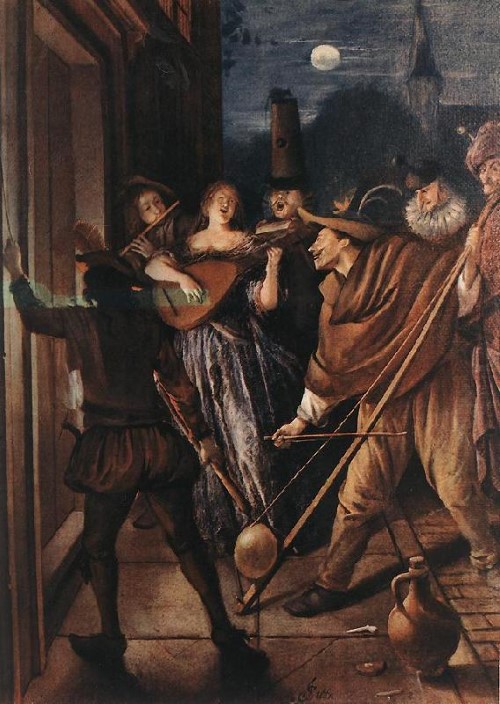- Nachtmusik II.
- F major.
The fourth movement (the second ‘Nachtmusik’) contrasts with the first in that it illustrates a more intimate and ‘human’ scene. With its ‘amoroso’ marking and reduced orchestration (trombones, tuba and trumpets are silent and the woodwinds are reduced by half) this movement has been described as ‘a long stretch of chamber music set amidst this huge orchestral work’.
Manuscript Symphony No. 7, Movement 4: Nachtmusik. Andante amoroso.
A solo violin introduces the movement, while a horn solo above the gentle tones of a guitar and mandolin create a magical serenade character. However, sardonic dissonances give this movement a more satirical and even diseased feel.
The trio contrasts with this, and more reflects the intimate mood that would be expected from a Viennese serenade. The movement ends in transcendence, providing a peaceful backdrop for the finale’s abrupt entrance.

‘Nocturnal Serenade’ (1675) by Jan Steen (1626-1679). This painting depicts an intimate serenade of the kind Mahler parodies in the second “Nachtmusik.”
Listening Guide
